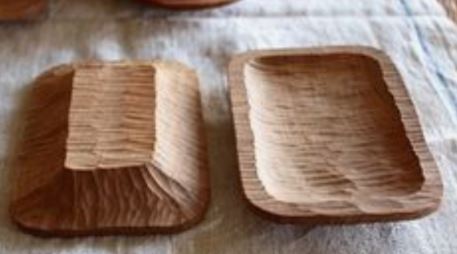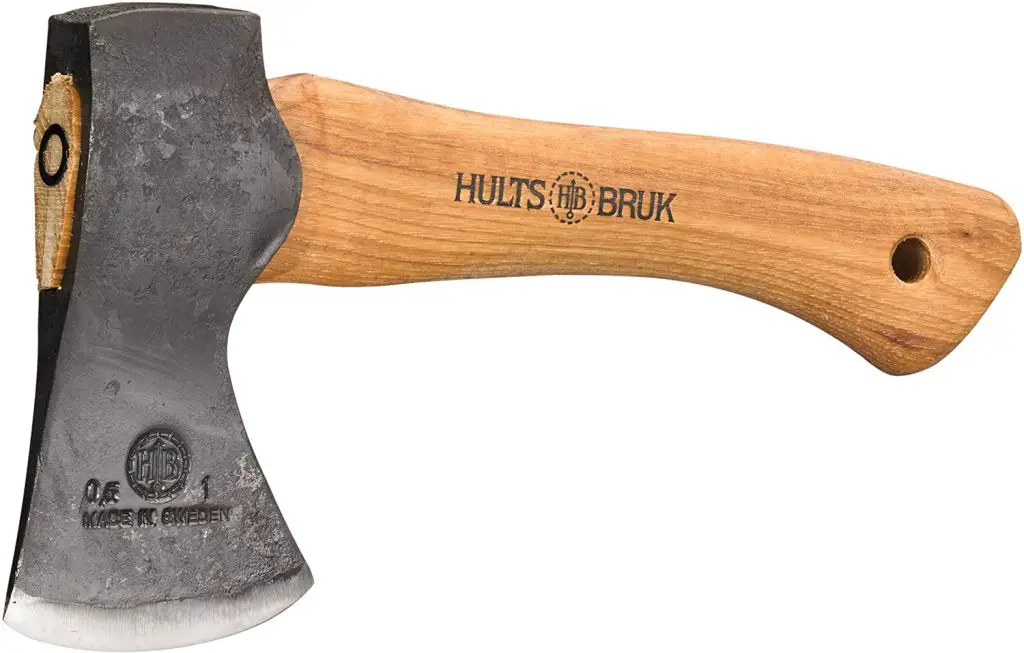A carving axe is a specialized woodworking tool with a lightweight, curved head and a beveled edge, designed for precise carving tasks. It is used to shape wood, create intricate patterns, or produce handcrafted items like spoons, bowls, and sculptures while providing excellent control and accuracy.
Carving axes have become increasingly popular throughout North America as the hobby of bushcrafting has grown. There is something fundamental and primal about walking into the wilderness with nothing but an axe and being able to craft every other tool you need to survive. You will certainly gain confidence that no matter what happens, you have the skills and tools to keep yourself and your family alive.
Bushcrafters often select a multi-purpose hatchet or camp axe that they can use for various tasks. This means they don’t need to carry multiple axes into their camp – so the best bushcrafting axe often has the characteristics of many individual jobs, including carving.
Table of Contents
Purpose
Carving axes are used to slice into pieces of wood to shape them into useful items such as bowls and spoons. They are popular in the bushcrafting community, where a competent user can create dozens of items from the wilderness without needing to carry them in their backpack.
They differ from splitting axes in that you don’t generate power by swinging a carving axe, but they are used more like a drawknife to press into softwood and slice shavings off the wood.
Here is a list of wooden items I have created with my crafting axe:
- Bowls and plates
- Spoons and paddles
- Small Game Traps
- Bow Drills
- Shelters
- Walking sticks
- Handles for axes, knives, or hammers

Features and Design
There are some design features that make an axe or hatchet better suited for carving. They are short like a hatchet but often have an axe head shape that is more concave and helps shape bowls and spoons. You should visualise holding the axe close to the head so that you can apply more force in a pushing motion away from your body. The shape of the axe head should assist you in carving whatever shape you are trying for.
Key carving axe design features:
- Handle Length – 12 to 18 inches
- Axe Head Weight – 1.5 to 2 lb
- Axe Head Shape – Concave
The curve of the axe edge is also a key design characteristic. If you want to carve a curved surface like a bowl, it is significantly easier with a similarly curved axe than using the toe or a flat axe blade. Carving axes also don’t need a wide carving edge having a shorter edge can be easier to carve delicate objects.
Carving axes also often have a handle that is curved towards the edge of the head. This gives more comfort when you are pressing the axe away from your body, rather than swing an axe.
I personally only use wooden axe handles for backpacking axes rather than the more modern fiberglass composite styles. This is so that if my composite handle breaks, I am in trouble. But if my wooden handle breaks, then I can take the head off and carve a new handle from any piece of wood I find lying around – not pretty, but I can survive.
Carving Axe Brands
There are dozens of different bushcrafting axes that have the ability to also act as a carving axe, but for the purpose of this article, I have narrowed it down to axes that are best suited for carving. These are premium axes that are well constructed and will last a lifetime. You should also consider creating your own axe head and handle if you are interested in the world of creating your own tools.
The top brands for carving axes are:
- Gransfors Bruk Hand Hatchet
- Husqvarna Hatchet
- Marbles Small Axe
- Hults Bruk Agelsjon Hatchet
- Hults Bruk Jonaker
- Council Tool Pack Axe
- Prandi Hatchet
There are plenty of other brands you could also use, as long as they have the abovementioned characteristics. You should focus on the axe handle’s shape, the axe head’s shape, and how comfortable it feels in your hand. I also recommend picking an axe that is less than 2.5 pounds in total weight. If you have a heavier axe, you will undoubtedly feel some muscle fatigue after spending a few hours carving.
What is the difference between a carving axe and a hatchet?
While hatchets and carving axes have similar length handles and axe heads, they differ in the shape of the axe head, which has a concave curved edge and a thinner bevel that allows the axe to slice through the wood rather than force the fibers apart.
Conclusion
Carving axes are extremely useful for campers and woodworkers. They are lightweight with short, curved edges that make it easy to start creating your own tools. For a bushcrafter and backpacker, they are essential to reducing your pack’s weight and helping you travel lighter and further into the wilderness. One of the best uses of a carving axe I have seen is to bring it as your primary tool with a secondary, larger axe head and knife blade and then craft your own handles from scratch.

